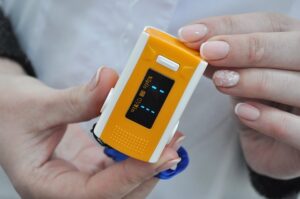
ON INTERNATIONAL ANTI-CORRUPTION DAY, FIGHTING ECONOMIC EVIL
With new standards in the works, ISO joins the fight. [CONSUMERS, MANAGEMENT SYSTEMS, BUSINESS & ANTI-BRIBERY] Corruption threatens national security, economic growth, human rights, jobs,
ISO 22000:2018 is an international standard for FOOD SAFETY MANAGEMENT
Food safety is a top priority for all customers, from farm to fork. Diseases spread due to contamination caused by a lack of hygiene or improper food handling. All food chain operators (those involved in the production, manufacturing, processing, preservation, catering, storing, packaging, shipping, and operating cafes/restaurants) should implement a food safety management system to assure the provision of hygienic and safe food items.
The ISO 22000:2018 standard lays out the standards for businesses to demonstrate their capacity to ensure food safety. This standard is used as a reference for establishing a food safety management system that includes effective processes and best practices for enhancing food safety.
The purpose of ISO 22000 is to regulate and decrease any identified safety hazards for end products transported to the next step in the food chain to an acceptable level. (An end product is one that does not require any additional processing or modification by the organization).
The new edition clarifies the standard for the hundreds of companies who have already adopted it around the world. It includes the following objects:
Implementation of the High-Level Structure, which is shared by all ISO management systems, allowing enterprises to integrate ISO 22000:2018 with certain other management systems (such as ISO 9001 or ISO 14001) at the same time.
A fresh approach towards risk, which differentiates between risk at the operational level and risk at the business level of the management system, as an important concept in the food industry.
The new standard allows for real-time monitoring of food safety risks.
1. Ensure product quality and increase customer satisfaction
2. To ensure that your own food standards policy is adhered to.
3. Establishing a food-safety management system (FSMS).
4. Show that you follow all relevant safety rules.
5. Ensure that issues with food safety are communicated across the food supply chain.
Here are some of the Key Elements of ISO-22000:2018-FOOD SAFETY MANAGEMENT to the Business Enterprises:
Food safety is not just the responsibility of the quality department. It’s a problem with senior management. ISO 22000:2018 focuses on the management team’s engagement in the development of overall policy.
Since food safety risks can occur at any point along the food supply chain, interpersonal communication both downstream and upstream is vital. Internal communication is also essential for avoiding misconceptions and reducing hazards. In this case, having a shared vocabulary is really beneficial.
The ISO 22000 HACCP (Hazard Analysis and Critical Control Point) principles integrate well-known HACCP concepts with prerequisite programmes. A strategy is determined by the hazard analysis, and an action plan is established by the necessary programmes.
ISO 22000 relies on a structured management system based on essential aspects of ISO 9001 for system management. Together with ISO 14001, they can be integrated into a single management system.
The prerequisite programmes are separated into two groups. Maintenance and Infrastructure programmes cover food safety features that are permanent. Operational precondition programmes are intended to limit the risk of hazards in the manufacturing or processing environment.
ISO 22000:2018 is a standard that specifies the requirements for a food safety management system and can be certified to. It lays forth what an organisation must undertake to demonstrate its ability to control food safety concerns and ensure the safety of its products. It works for every firm, regardless of location or size. Defining best practises within a company will allow it to generate strong results, instil confidence throughout the organisation, and impress customers and stakeholders.
ISO 22000:2018 is an effective framework for implementing a food safety management system. It is used by companies across the food chain to help deliver food that is safe to eat (FSMS). ISO 22000 is in the process of being updated to ISO 22000:2018.
Since the initial guideline was issued over a decade ago, a lot has changed in terms of how food is grown, transported, made, and even consumed. The new standard takes these changes into account and intends to assist businesses in reducing food safety risks.
The revised edition of ISO 22000:2018 introduces the Plan-Do-Check-Act (PDCA) cycle and risk-based thinking, in addition to making ISO 22000:2018 and the consequent FSMS easier to connect with other ISO management systems. ISO 22000 helps firms minimise risk and improve safety by combining PDCA and risk-based thinking to manage business risk with HACCP to detect, avoid, and control food safety hazards.
The following is the typical procedure for an organization seeking ISO 20000 certification:
A management system must be in use for a period of time before it can be audited. The certifying bodies usually require a minimum of three months.
A management system must have at least one internal audit report and one management review before it can be accredited.
Each organisation can choose its own certification body (registrar).
An organisation may choose to conduct a pre-audit in order to discover any potential gaps between its current management system and the standard’s requirements.
A review of the management system’s design for conformity. The major goal is to ensure that the management system is built to meet the requirements of the standard(s) as well as the organization’s goals.
A review of the management system’s design for conformance. The major goal is to ensure that the management system is built to meet the requirements of the standard(s) as well as the organization’s goals.
The goal of the Stage 2 audit is to see if the stated management system meets all of the standard’s requirements, is being implemented in the business, and can help the business meet its goals.
the Registrar approves the registration and publishes the certificate if the organisation complies with the standard’s standards.
All requirements of this document are generic and are intended to be applicable to all organizations Feed producers, animal food manufacturers, wild animals and plants harvesters, farm workers, food products manufacturers, food manufacturers, retailers, and organisations providing food services, caterers, cleaning and sanitation services, transport infrastructure, storing, and distribution channels, as well as suppliers of equipment, cleaners and disinfectants, packaging materials, and other things that come into touch with food are all directly or indirectly involved.
Small and/or less developed companies (e.g., a small farm, a small packer-distributor, a small retail or food service outlet) can also use externally produced features to implement in their FSMS.
Unsafe food can have serious repercussions. Food safety management standards from ISO assist enterprises in identifying and controlling food safety risks while also collaborating with other ISO management standards. ISO 22000:2018, which is applicable to all sorts of producers, adds a layer of assurance to the global food supply chain, allowing products to traverse borders and getting food to people who need it.

With new standards in the works, ISO joins the fight. [CONSUMERS, MANAGEMENT SYSTEMS, BUSINESS & ANTI-BRIBERY] Corruption threatens national security, economic growth, human rights, jobs,

ISO standards are offering much-needed solutions as cloud computing revolutionizes the way we socialize and work. [ECONOMY, INNOVATION, COVID-19 & HEALTH] The cloud serves as

New eye-protection guidelines have just been released. [MEDICAL, SAFETY & SPORT] Our eyes are our window to the world and one of our most developed

Organizations must have procedures in place to guarantee they stay up with the regulatory landscape, which is always evolving. Compliance with laws and regulations, on

Regulatory burdens are reduced while product safety and performance are improved. [MEDICAL & BUSINESS] Medical gadgets, ranging from bandages to MRI machines, contribute to save

ISO IS AT THE CENTRE OF A WORLDWIDE EFFORT TO REHABILITATE OUR PLANET. ISO 14000 FAMILY This year’s World Environment Day theme is “Reviving and

ALL INTERNATIONAL STANDARD ACCREDIATION FORUM